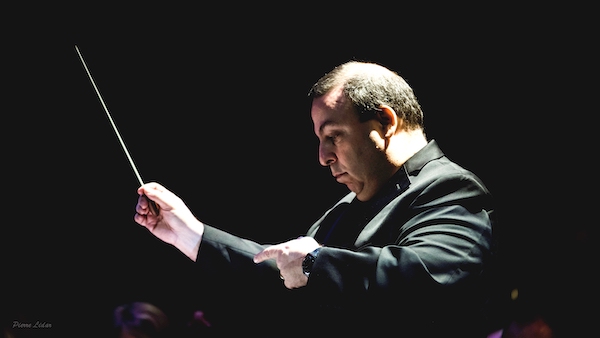New York Repertory Orchestra serves up American music, old and new, with great satisfaction

The New York Repertory Orchestra is the kind of ensemble every classical music community needs. They’re not as polished as the New York Philharmonic or the orchestras that visit Carnegie Hall, and they give fewer than 10 concerts a season.
But even in a city with eight million people, there is only one full-scale, full-time local professional orchestra—a sad state of affairs when one considers how cities in Europe publicly support multiple high-level ensembles.
But under music director David Leibowitz, the New York Repertory Orchestra brings to life terrific works from the classical tradition that one won’t hear in Carnegie Hall and like venues, because . . . well, who really knows? The advantage and value the NYRO delivers is that, freed from major influence of marketing departments, it can just play worthwhile music.
Saturday night at the Church of St. Mary the Virgin, that meant Norman Dello Joio’s Meditations on Ecclesiastes and the Symphony No. 2 by William Grant Still, along with a world premiere from composer Peri Mauer.
Dello Joio’s sumptuous theme and variations for string orchestra won the Pulitzer Prize in 1957 and is a fine exemplar of the strangely neglected era of post-WWII American tonal modernism. The orchestra captured the lovely opening strains, which descend from a cloud-like texture to something rich and grainy.
Following verses 1-8 in Ecclesiastes, the music moves through many moods: repose, hope, sorrow, anger (“… a time to kill”), and finishes with the final juxtaposition of war—an aggressive con brio—and peace. The performance was steady and involved, with good intonation and color from the strings. The main theme, in the second section, was on the lethargic side, but Liebowitz and the orchestra seemed to grow more comfortable and build energy as the music went along, and the final movement, marked semplice, had a feeling of satisfactions fully earned.
Mauer’s Woman on a Journey (“Kin Janabarhi Vra”) was an elegiac memorial to Marguerite Iskendarian, the orchestra’s principal cellist who was killed, tragically and infuriatingly, by a hit and run driver this past spring. Mauer, a former NYRO cellist herself and colleague of Iskendarian, responded with a gorgeous, moving, imaginative, and finely shaped piece. Opening with solo flute, later joined by clarinet, the music skillfully balanced sorrow and happiness in an uncanny mix of mourning and loving remembrance.
One had the sense that the orchestra produced the sound and expression Mauer had in mind when she put pen to paper. The playing was stylish and expressive—principal flutist Diana Basso displayed a rich, lovely sound—and the orchestra had real command of the music. The work doesn’t sit still or repeat sections, moving from one idea to the next with elegant transitions, like perusing memory, before rising up in an orchestral glissando that dissipates into the air. This was an impressive work from Mauer and stands on its own as a captivating and rewarding piece of music.
After intermission, concertmaster and assistant conductor Stephan Fillare took the podium to lead Still’s symphony, subtitled “Song of a New Race.” The last of a trilogy of symphonic works from the composer, the symphony expresses Still’s hope for a racially integrated America, and was premiered by Leopold Stokowski and the Philadelphia Orchestra in 1937.
Even more neglected than the work of Dello Joio, this is a wonderful symphony on its own terms, and is an important American work. Still uses his own original conceptions of folk tunes, 19th-century dance steps, and blues and jazz in a well-made form, and thus shows how vital American classical music is when it builds out of the black music origins that are an essential part of this country’s culture.
The playing felt relaxed and assured, with the musicians making a meaningful statement. It was delightful to hear this sound of a grounded, witty, urbane modern culture brought to life by the orchestra. Fillare guided a well-tuned flow, carrying substantial energy while always under control. Dynamics were expressive—even though at times the work was too big for the church’s resonant acoustic—and key gestures and cadences come off with great satisfaction and without exaggeration. The performance was like a purposeful stroll through the best of New York City, seeing the people and places that make the place exceptional, with Fillare bringing it all home with real fulfillment.
The New York Repertory Orchestra plays Debussy’s Danse sacrée et danse profane and Mahler’s Symphony No. 7, 8 p.m., February 12, 2022 nyro.org






